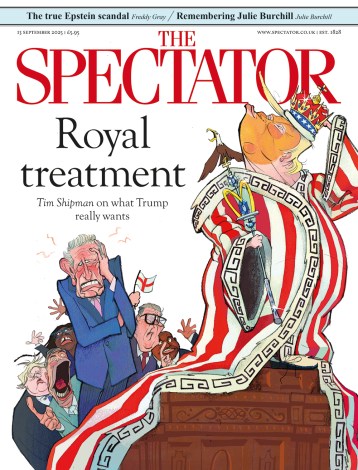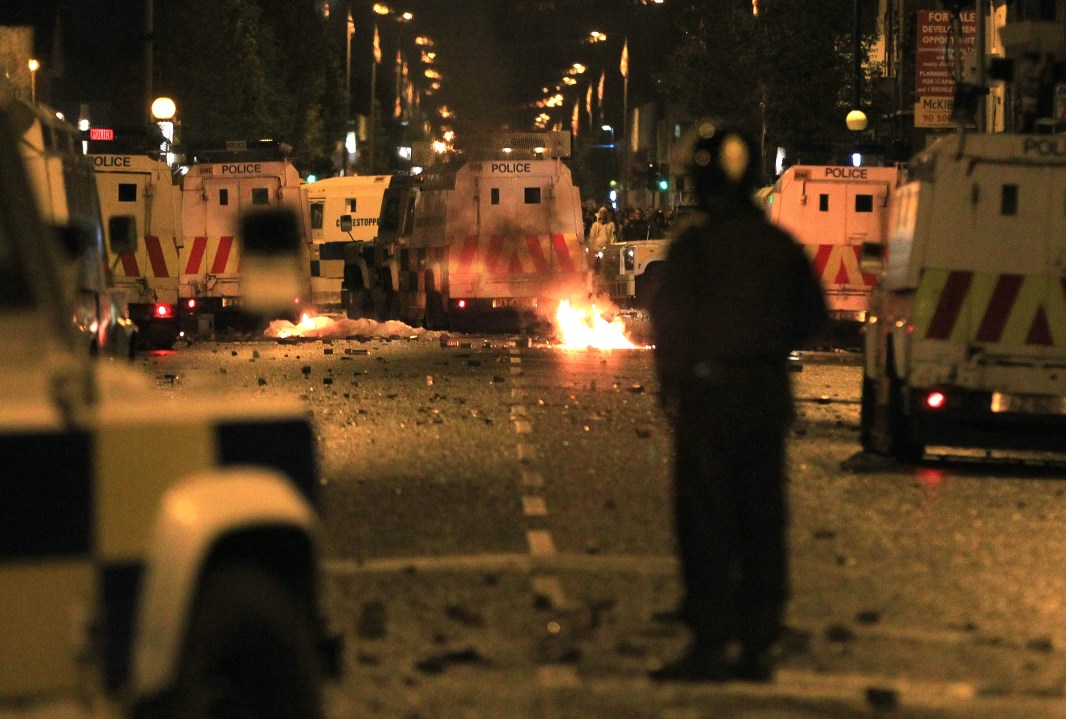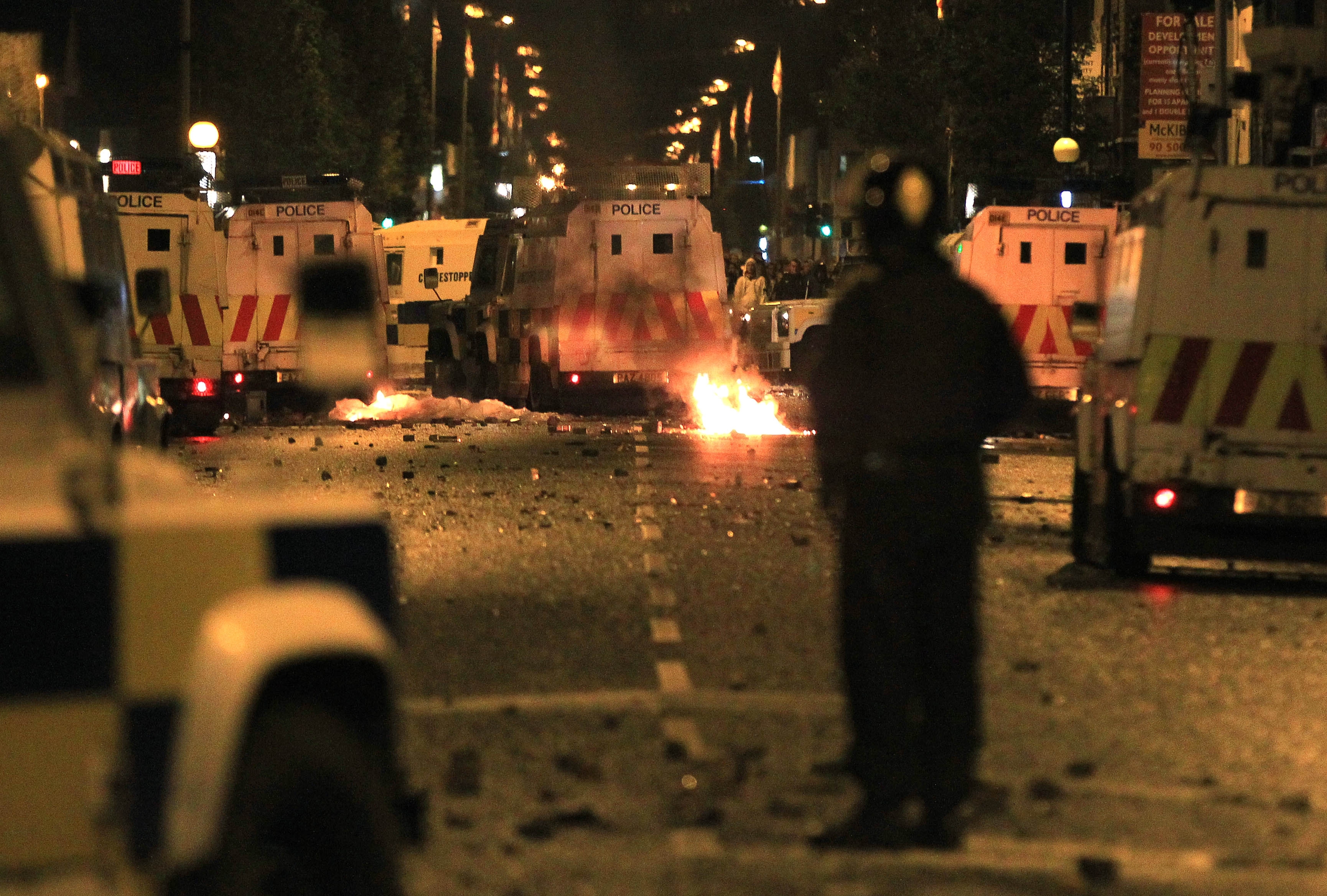
I live three miles away from where the rioting was happening in East Belfast last night, and heard the helicopters whirring overhead. It was the kind of sound that anyone living in the city hoped never to hear again. As a child, I’d lie in bed and hear bombs and sirens and helicopters — and we had all hoped that dark chapter had been closed.
A tipping point of violence has now been reached. A press photographer has been shot, another given a fractured skull after a second night of riots. And in the aftermath, the blame game cacophony begins: Who started it? It was them. No it was them … ad infinitum on BBC Radio Ulster’s Stephen Nolan Show. While the most important question in all of this is not addressed. Why is this happening? Why now? Why has this community erupted in such explosive violence?
There have been signals along the way. In recent weeks, community murals have been repainted with stark paramilitary images. Black and white, no shades of grey. A plethora of Loyalist flags fluttering with foreboding. The tensions have been rising.
Now, in the aftermath of two nights of rioting, the politicians in the NI Executive tell us they are devising a strategy; the locally elected MLA and First Minister Peter Robinson says he will get “directly involved” — but why was there no strategy before now to deal with the myriad of problems that riddle this community?
Only a day after Rory McIlroy’s US Open victory, which brought the Northern Irish community together in pride and celebration, the streets of east Belfast erupted. Rory encapsulated what the new Northern Ireland believes itself to be: confident, mature, composed, a player on the world stage, a country which had put its dark past behind it and emerged united with hope and common purpose. There was excited talk across the media on Monday morning of how the Rory factor would increase tourism, the confidence of potential investors would be buoyed, our economy would revive and we all believed. Rory glory. But the scenes from east Belfast tell another story. From a mood of optimism a wave of depression has descended. It brings back dark memories. Has the new Northern Ireland just painted over the cracks, are the riots what happens when the gloss is scratched? Have our politicians gone too far too fast and left their home fires unattended? Attention must be paid.
It’s easy to dismiss the riots as sectarian violence — but that’s just a get-out clause for those who don’t want to make the effort to deal with what’s really going on in these dislocated and fractured communities. These are areas of high social and economic deprivation, inter-generational unemployment. Places where young people have no prospects, no hope. Paramilitaries are filling the vacuum that is left and intra-community feuding is rife.
The recession hit all of Britain hard, but in Northern Ireland the figures are especially depressing. In east Belfast, the cranes of the Harland and Wolff shipyard still dominate the skyline. The shipyard once employed 15,000 people. It was a workforce that built the ocean liners of the White Star Line, but it is all long gone.
Three years ago, Ed Balls went off to the Gaza Strip and came back declaring that lack of economic opportunity was behind the Middle East tension. It’s amazing how blind British and Irish politicians can be to the same phenomenon on their own doorsteps. Entrenched poverty and youth unemployment is the Petri dish from which the menace of sectarian violence is emerging once more.







Comments